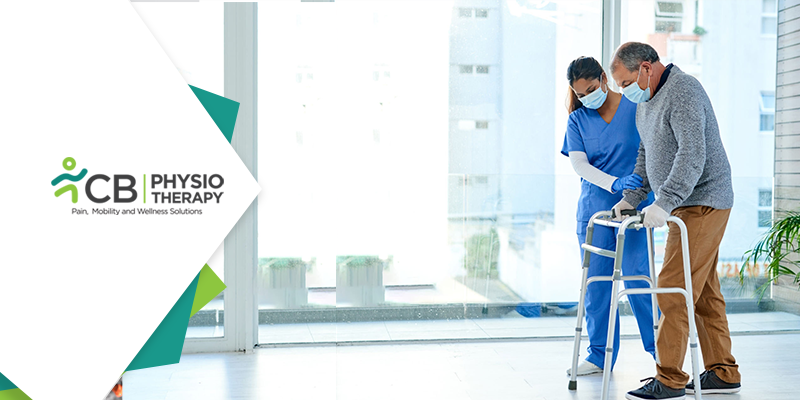If you suffer from a stroke or any injury in your leg or foot, then you need to use a walking aid during the process of healing or recovery. These essential walking aids are recommended by your physiotherapist, they include crutches, a cane, a walker, etc. The walking aid helps to keep the bodyweight off the injured or weak leg and helps in balancing and enables to perform the daily activities more safely. In this blog, we'll discuss the different walking aids and how to use them safely.
Crutches
After injury or surgery, non-weight bearing on the leg or foot is required if you are unable to bear any weight on your leg or foot, you may have to use crutches.
Positioning
- While standing straight, the top of the crutches should be about 1-2 inches below the armpits.
- Handgrips of the crutches should be at the level of the top of the hip line.
- Elbows should be slightly bent while holding the handgrips.
- The weight should rest on the hands and not on the underarm supports, to avoid damage to the nerves and blood vessels in the armpits.
Walking
- Slightly lean forward and put the crutches about one foot in front.
- Begin the step as if you were going to use the injured leg or foot but, instead, shift the weight to the crutches.
- Slowly bring the body forward between the crutches.
- And finish the step with a good leg.
- While the good leg is on the ground, move the crutches ahead to prepare for the next step.
- Always look forward, not down at the feet.
Sitting
To sit:
- To sit on a sturdy chair.
- Put the injured foot in front of you and hold both crutches in one hand.
- Use the other hand to feel for the seat of the chair behind you.
- Slowly lower yourself into the chair.
- While being seated, lean the crutches upside down as crutches tend to fall when they are leaned on their tips.
To stand up:
- Bring the body to the front of the chair.
- Both the crutches are held in the hand on the injured side.
- Bring the body up and stand on the good leg.
Stairs
To go up and come downstairs with crutches:
- Face the stairway, hold the handrail with one hand, and tuck both crutches under the armpit on the other side.
- While going up, lead with the good foot, keep the injured foot raised behind you.
- While going down, hold the injured foot up in front and hop down each step on the good foot.
- Take only one step at a time.
Canes
- A cane can be used in case of minor problems like pain, weakness, injury in the leg or trunk, or problems with stability or balance.
- In elderly people, a single-point cane is used to walk more comfortably and safely. For more stability, a quad cane, which has 4 points, can be useful.
Positioning
- While standing straight, the top of the cane should reach the crease in the wrist.
- Elbow should be slightly bent to hold the cane.
- Hold the cane in the hand opposite to the affected side. For example, if the left leg is injured, hold the cane in the right hand.
Walking
- To walk with the cane take about one small stride ahead and step off on the injured leg.
- Finish the step with the good leg.
Stairs
To climb stairs:
- Place the cane in the hand opposite to the injured leg.
- With the free hand, grasp the handrail.
- First, step up on the good leg, and then step up on the injured leg.
To come downstairs:
- Place the cane on the step first
- Then, put the injured leg on the step.
- Finally, put the good leg, which carries the body weight, on the step.
Walking
- Position the walker about one step ahead, making sure that all four legs of the walker are on even ground.
- With both hands, grip the walker for support and move the injured leg into the middle area of the walker, don't stop at the front.
- Push straight down on the handgrips of the walker to bring the good leg up so it is even with the injured leg. While turning take small steps and move slowly.
Sitting
To sit:
- Back up until the legs touch the chair.
- Use the hands to feel for the seat of the chair behind.
- Slowly lower yourself into the chair.
To stand up:
- Push yourself up using the strength of the arms and grasp the walker's handgrips.
- Do not pull on or tilt the walker to help to stand.
Stairs
- Never climb stairs or use an escalator with a walker.
While using walking aid for the first time, have a family member or a friend nearby to give you support. Initially, it may seem difficult but after taking a few tips and a little practice, most people can gain confidence and learn to use a walking aid safely.

